The huge cicada emergence for 2024 is here, or almost here! They've started to emerge in the southern most regions, like the Carolinas, about a week ago (April 20). They are predicted to emerge May 15th where I live in the Chicago area, but we're coming up on a very warm week so they might crawl out of the ground sooner.
I'm in (or near?) one of the areas that might get both the 13 and 17 year emergence at the same time, something that happens once every 221 years.
Once you hear them making noise, you have about a week to protect your trees.
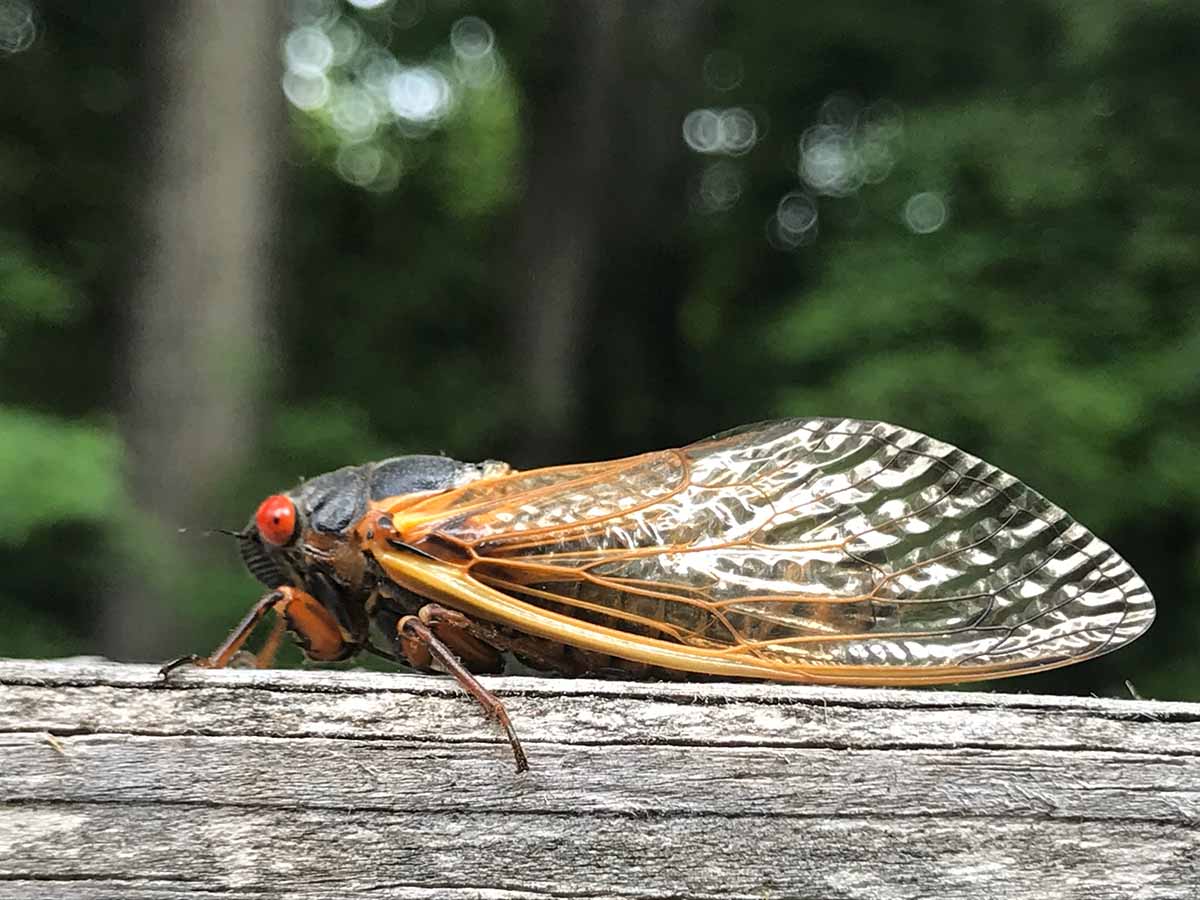
As luck would have it, I recently relocated and added a lot of young trees that need protection from this year's cicadas. In order to be fully prepared, I've been talking with experts from the Chicago Botanic Garden, the Morton Arboretum, and several local horticulturalists.
This article shares what I've learned along with links to more resources and the products I've ordered for my own yard (like the best netting for cicadas, along with bamboo stakes and tree ties).
Jump to:

What happens when cicadas emerge
Cicada nymphs emerge when the soil temperatures warm enough. According to the National Centers for Environmental Information, they "emerge after a rainstorm when the soil temperature at 8 inches in depth exceeds approximately 64°F."
The nymphs will climb a vertical surface to molt into their winged form. They usually climb a tree or bush, but it could also be the side of a house, a power line pole, a fence post, or even the side of a car tire. Their dead molted bodies are left behind and stick to whatever they were on (it's gross!)
After their new exoskeleton hardens (about a week later), the males are ready to begin their mating calls.
Once the males start singing, females will mate and lay their eggs 7-10 days later. The egg laying process is what can damage your trees.
The Smithsonian Institute has a helpful page about the cicada lifecyle, if you'd like to learn more.
How do cicadas damage young trees?
Cicada damage to fruit trees happens on two fronts: egg laying and a reduced fruit harvest.

Egg laying damage
Tree damage from cicadas happens when the females lay eggs in the branches. They cut slits in pencil thin branches and deposit their eggs. According to Penn State, "Each female lays up to 400 eggs in 40 to 50 pockets in the wood of several small branches of many types of trees." The branches might wilt or die back, a condition called flagging. (University of Maryland has some helpful pictures of flagging).
Young trees can be decimated and killed from too much injury, especially during the giant 2024 emergence. Fruit trees that are 4 years or younger are at a very high risk of death because the majority of their branches are the preferred diameter for cicada egg-laying.
Mature fruit trees with a majority of branches thicker than an ½ inch diameter can sustain damage. However, as Penn State notes, the tips of the branches might be thin enough to egg laying and thus the tips might die off.
Reduced harvest
Cicadas don't directly lower your fruit harvest, instead the loss come from dead or broken branches that result from the egg laying process.
When the female cicada cuts slits into a branch, it can get severely weakened. Sometimes the branch will die back entirely, but even if it doesn't, it is at risk for breaking off.
Thin fruit tree branches already have their work cut out for them holding onto heavy fruit as it ripened. If those branches get weakened from cicadas, they are likely to break and you'll lose the fruit along with them.
If your fruit tree is heavily pruned for shape or espalier, I suggest covering it, regardless of its age.
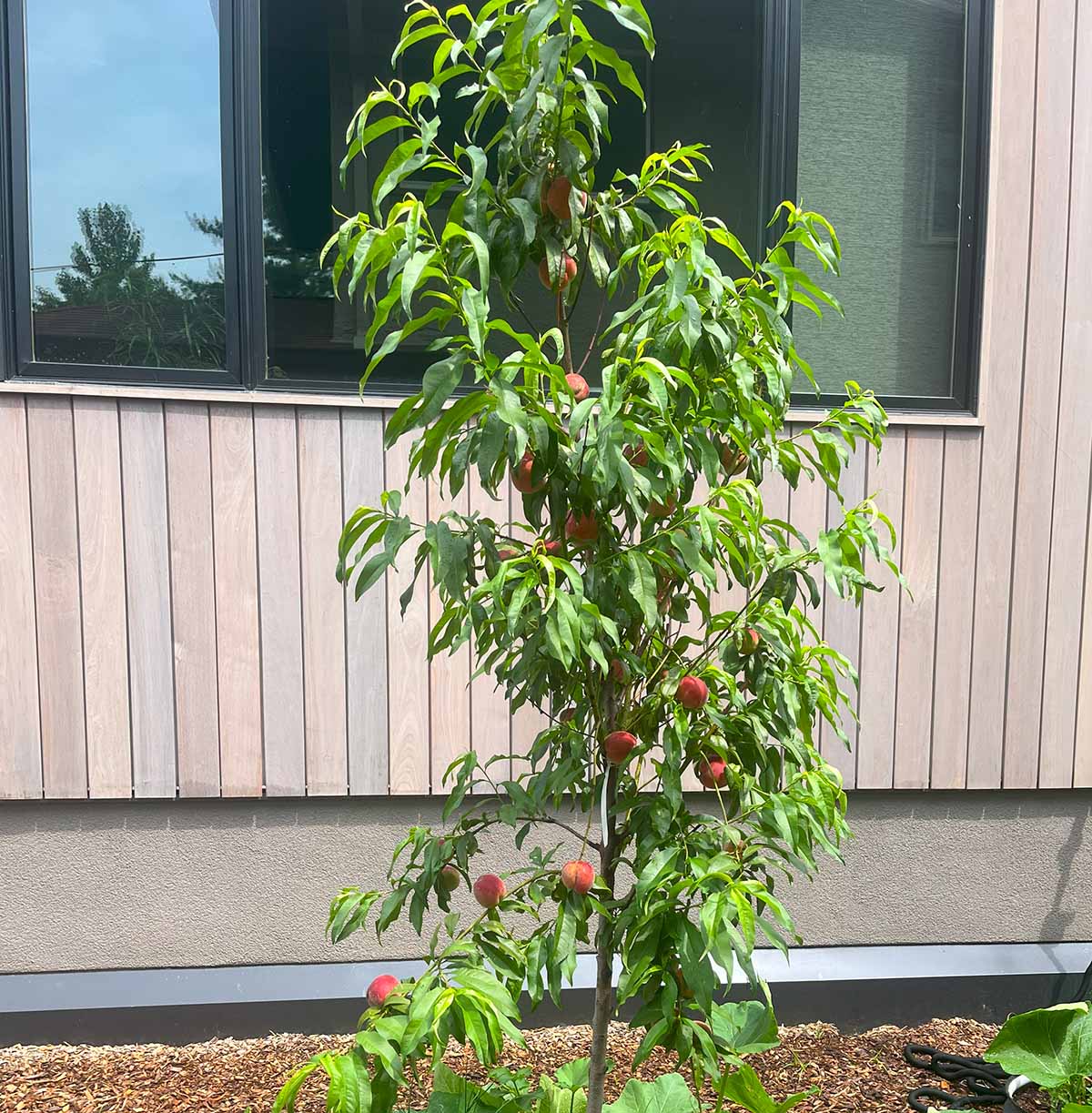
What trees do cicadas prefer?
Cicadas prefer deciduous trees since their branches are easily accessible and always have new growth that is pencil thin. Deciduous trees are the ones that lose their leaves in fall and winter, so this affect almost all non-evergreen landscape trees. The most commonly affected trees are oaks, maples, hickory, dogwoods, redbuds, service berries, and fruit trees.
Fruit trees, like peaches, cherries, apples, and pretty much anything with skinny branches are also attractive sites for females to lay their eggs. This includes nut trees, like walnuts, hickory, and so one.
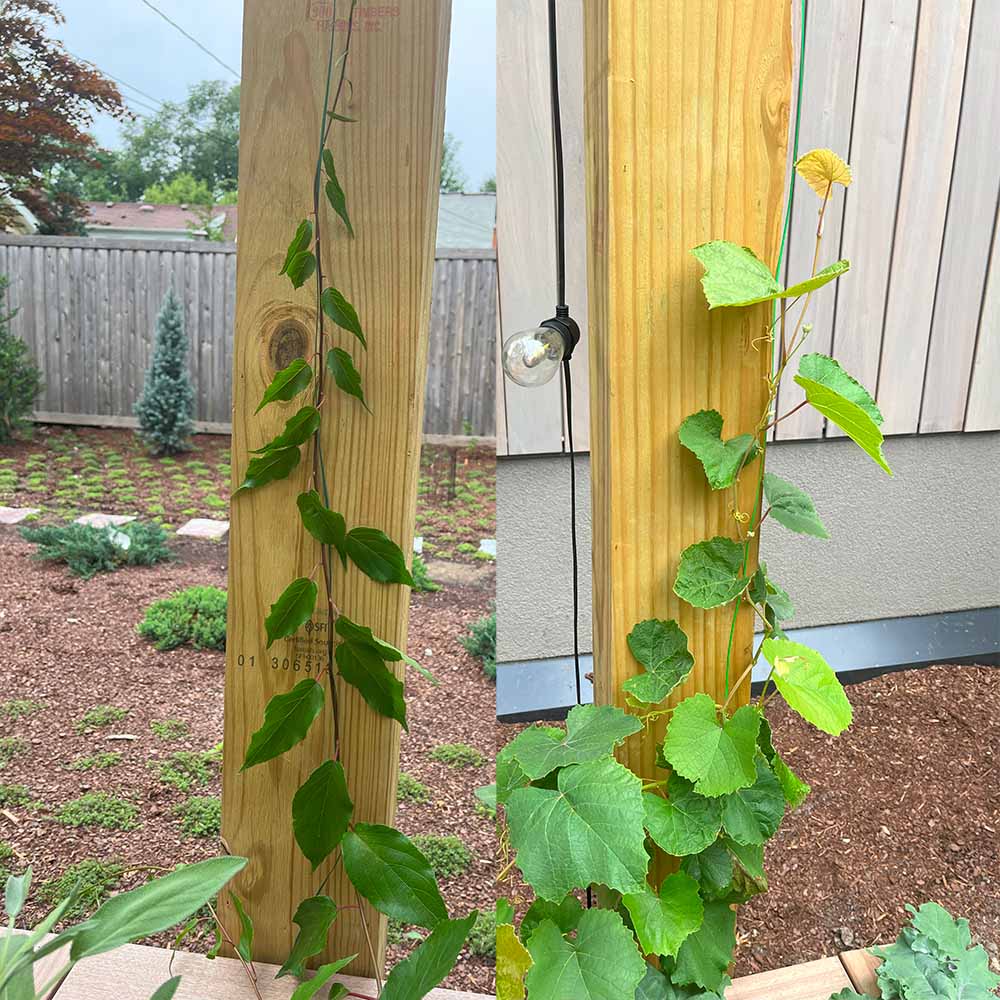
An often overlooked category of plants that can be damaged are woody-stemmed fruit bushes and vines. This includes blueberries, raspberries, blackberries, grape vines, and kiwi berry vines, which can all be damaged by cicadas. Their vines and branches are the perfect diameter for egg laying.
Lastly, a few more unexpected plants can also be susceptible to damage: rose bushes and holly. Roses are beautiful and edible, so I suggested netting them. Holly also provide berries for the birds in the winter, and since they are fairly slow-growing, significant damage can take years to recover.
Larger trees can handle the damage, but young trees will benefit from some form of protection. If you have Japanese Maples, I'd protect those too, as they are usually quite small and therefor almost every branch is an attractive egg laying destination.

Evergreen trees are not preferred as the branches can be harder to get to with pine needles (etc) sticking out all along the branch. However, after consulting with several experts, they agree that with such a large emergence, it would be wise to protect young evergreen trees as well.
Cicadas historically don't cause damage to vegetable plants, like tomatoes or asparagus. However, I'm personally going to keep an eye on them since we have two giant broods emerging this year.
Purdue has a more complete list of trees preferred by cicadas.
When is the best time to protect your fruit trees?
It's hard to predict when the cicadas will emerge, since it's based on soil temperature, and possibly a good rain. In warmer areas this happens in April or May. In cooler regions, cicadas might not emerge until May or even late June.
The good news is that you don't have to protect your fruit trees before they emerge, so accurately predicting their emergence isn't necessary. Instead, wait until you hear the first ones start singing - then get out and protect those trees!
Once they start singing, the females will mate and lay eggs 7-10 days later. You want netting surrounding young trees before that happens.
However, make sure you are prepared to protect your trees from cicadas as early as possible. You don't want to be caught off guard if stores sell out of netting or fabric (or if prices skyrocket because of low inventory).
How to protect your trees - be prepared!
Cicadas are pretty large, so protecting your trees is relatively easy. Most everyone agrees that any netting with holes ¼ inch or smaller will keep the females out, preventing them from laying eggs. Buy the supplies now so you are prepared for the cicadas when they emerge.
Netting for cicadas
There are actually several netting options to protect young trees from cicadas:
- ¼" bird netting
- Row cover material
- Shade cloth
- Cheese cloth
- Insect netting
- Tulle (tutu fabric)
- Tape, staples, (clothespins as needed to secure the netting)
I'm using tulle because it's very affordable, easy to work with, and won't get bogged down by the rain (like cheesecloth can). I can sew pieces together to cover a few larger trees that are still too young to withstand the damage, like my crabapple tree.
Tulle fabric is also one of the suggested methods for cicada management at the Morton Arboretum, and has been used for netting trees at the Chicago Botanic Garden as well. (They used green tulle and it looks decent).
It's really affordable, especially on Amazon where it can be found for $0.50-$0.75 per yard for a 108" wide bolt. Compared to Joann's where it usually sells for $1.00-$2.50 / yard (depending on the sales / coupons) for a 108" wide bolt.
I bought 40 yards from Joann before I found it on Amazon. The first order got cancelled because they were out of stock on that color apparently. The second order I placed was fulfilled across 4 different shipments and 8 different cuts. I was hoping for two 20-yard bolts. Update on March 18,2024: Joann filed for bankruptcy, so I wouldn't trust their online fulfillment considering I already had problems with previous orders. You can check if they have it in person, however.
So I bought the rest of what I needed on Amazon, where it was being sold by the bolt. Look through the tulle options on Amazon (affiliate link).
I didn't use bird netting because it actually can be more expensive, is sold in smaller sizes, and it easily tangles every time I work with it. (It tangles on itself and around the tips of tree branches).
How to put netting on your trees
First of all, don't cover your fruit trees too early as the fabric will block pollinators and some light (roughly around 30% for shade cloth and tulle). The trees might be covered for up to 4-8 weeks, so you don't want to shade them for longer than necessary.
Second, you might want to use a bamboo pole or some other support stick up the central leader of any fruit tree or meticulously sculpted landscape tree. Without the extra support, the central branch might not grow well or grow crooked. I'm using these 5' bamboo stakes (affiliate link) and tying them with the tape linked below. If you have taller trees, look for 8' poles (affiliate link), just know they are quite a bit more expensive than shorter poles.
You'll want to loosely cover the canopy, allowing space for the branches and leaves to grow. The trees will be covered during a good portion of their vigorous growth cycle, so it's a good idea to account for that growth.
Once you get your fabric or netting over the top of your canopy and around the branches, secure it tightly to the trunk. Cicadas aren't good fliers, so they tend to do a lot of crawling up vertical surfaces. Because of this, you want to make sure cicadas can't crawl up the trunk and under the netting.
I plan to use a stretchy tape that acts like a rubber band. It will keep the netting pulled tight while not strangling the tree as it grows. This is the tape I bought on Amazon (affiliate link). I also plan to staple the fabric shut on the sides or anywhere it meets if I can't gather it all around the trunk.
The one major downside of covering your trees is that it can prevent pollinators from reach the flowers if the flowers emerge during this time. Most of my fruit trees will have flowered before the cicadas emerge (at least, in theory!).
The Maryland extension office shared a video on how to cover a tree with netting to protect them from cicadas. They also have one of the best online resources for understanding cicada damage, along with really helpful pictures.
How much fabric or netting to order
Lastly, you need to know how much netting or fabric to buy. For trees 6' and under, a 108" wide fabric spool should be able to cover from the top to under the canopy. The fabric can go 6 feet up, then another 3 feet to bend over the top and connect in the middle with the other side. For trees taller than 6', you'll need to piece together fabric to connect it at the top.
For the shorter 6' trees, you can calculate how much fabric or netting you'll need with a circumference calculator. As an example, if I have a 4 foot wide tree (4' diameter), I use this online calculator and enter '4 feet' in the diameter box. It tells me that I will need 4.2 yards (12.5 feet) of fabric to wrap around the outside of the tree. This method requires me to secure the top and bottom (I plan to sew the top to essentially make a 'bag' that I can put over the tree).
Alternatively, you can use the method suggested on the Maryland Extension video where you multiply the tree's height by 2, then add the width. This will let you drape the material over the top and gather it underneath.
Since I want to leave room for spring and summer growth, I'm adding at least 2 feet in diameter for each tree. You could easily add 4 feet (assuming 2 feet of growth in each direction) to be a bit more generous.
My own yard as an example
Nearly every tree in my yard has to be protected since they are all so young. I'm stocked up and fully prepared for when the cicadas emerge - I ordered 100 yards of tulle fabric to net the trees from cicadas, along with a few other necessities like ties and stakes.
Below are trees that I'm protecting, their size, and the number of yards of tulle needed before adding extra for growth. I worked with the 108" dimension, orienting it differently for tree heights, pergola heights, long garden beds, etc.
- Peach tree: 6' tall by 6' wide, 6.5 yards
- Cherry tree: 6' tall by 6' wide, 6.5 yards
- Almond tree (Javid's Iranian almond): 6' tall by 6' wide, 6.5 yards
- Japanese Maple: 10' tall by 6' wide: 12 yards (more to cover the top)
- Paw paw trees: 2' tall by 1' wide: 2 yards
- Cherry tree: 3' tall by 2' wide: 2 yards
- Blueberry garden bed: 9' long bed by 3' wide: 4 yards
- Raspberry patch: 9' long by 3' deep, by 5' tall: 6 yards
- Grape vines up a pergola: 10' tall, need to wrap around trunk and posts: 2 yards
- Currants: 1' tall by 1' wide: 1 yard
- Hardy kiwi (kiwi berries): 3 feet tall: 1 yard
- Crabapple tree: 12' tall by 8' wide: 10 yards
- Baby evergreens: 3' tall by 2' wide: 2 yards for every 2 trees (cutting the 108" direction in half).
More resources
For more cicada resources:
- Chicago Botanic Garden
- Morton Arboretum
- Maryland Extension video on netting a tree
- Maryland website on cicadas
- Purdue list of preferred cicada trees, and pictures of die back, egg laying, and more
- Smithsonian Institute page on cicada lifecycle
Products:
More garden guides:
- 3 signs when butternut squash is ready for harvest
- Growing butternut squash on a trellis
- My new favorite seed starting supplies
- Javid's Iranian Almond: a cold hardy tree for the Northeast & Midwest
- Seed picks for my 2024 garden
- Mara des Bois strawberries: a little berry with big flavor
- The best & cheapest sources for vegetable seeds in 2024
- When & how to harvest asparagus




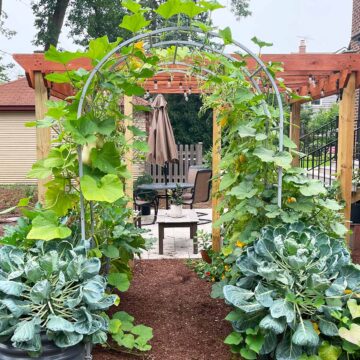

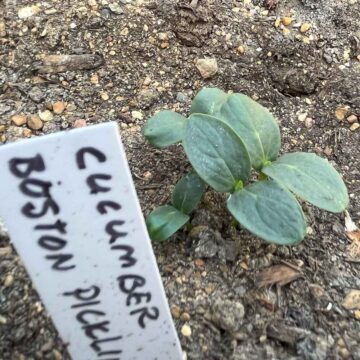
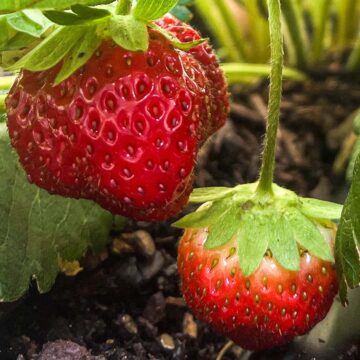


Leave a Reply